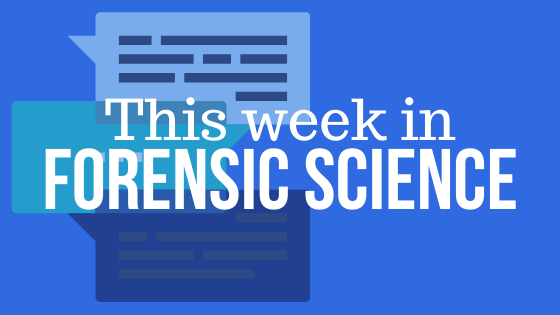No one has hours to scour the papers to keep up with the latest news, so we’ve curated the top news stories in the field of Forensic Science for this week. Here’s what you need to know to get out the door!
Scientists Finish the Human Genome at Last (The New York Times – 7/26/2021)
- Two decades after the draft sequence of the human genome was unveiled to great fanfare, a team of 99 scientists has finally deciphered the entire thing. They have filled in vast gaps and corrected a long list of errors in previous versions, giving us a new view of our DNA.
Idaho Deputies Work with DNA Lab to Identify Human Bones That May be from 1980 (CBS2 Idaho News – 7/23/2021)
It’s a mystery involving the discovery of human bones at Palisades Reservoir in Idaho near the Wyoming border in 2002 — a mystery that may date all the way back to 1980.
The Bonneville County Sheriff’s office has been trying to identify a human skull and vertebrae confirmed to belong to a male adult ever since the remains were found on the shore of Palisades Reservoir in 2002.
DNA Connects Man to 33-Year-Old Homicide, Pennsylvania State Police Say (WGAL8 – 7/27/2021)
- Pennsylvania State Police have made an arrest in a 1987 homicide in Adams County, a killing for which an innocent man was originally convicted.Christopher Speelman has been charged with robbery, rape and homicide in the 1987 killing of 85-year-old Edna Laughman.
DNA Mixture Interpretations: A Q&A with NIST’s John Butler (NIST – 7/28/2021)
Whether from skin cells, saliva, semen or blood, DNA from a crime scene is often collected and tested in a lab to see if a suspect’s DNA is likely a contributor to that sample or not. But every DNA sample tells a different story, and some samples are easier to interpret than others. The simplest type of DNA profile to interpret is one where the sample includes hundreds of cells from only one person. When two or more people have contributed to a sample, it’s called a DNA mixture. Some mixtures are so complicated that their stories remain a mystery even to the best forensic DNA experts.
John Butler, a Fellow at the National Institute of Standards and Technology (NIST), and a team of authors have recently completed a draft scientific foundation review of the different methods forensic laboratories use to interpret DNA mixtures. The team urged for more interlaboratory participation in studies to demonstrate consistency in methods and the technology used in DNA mixture interpretation, as well as a need for sharing data publicly. In this interview with NIST’s Christina Reed, Butler — who has over 30 years of experience with DNA profiling, is the author of five books on the subject, and has led training workshops on interpreting DNA mixtures — answers some basic questions about the importance of this fast-growing field of forensic science.
Forensic Scientists Design the First Machine Learning Approach to Forensic DNA Analysis (Syracuse University – 7/28/2021)
Michael Marciano, research assistant professor and director for research in the Forensic and National Security Sciences Institute (FNSSI) within the College of Arts and Sciences, and Jonathan Adelman, research assistant professor in FNSSI, have invented a novel hybrid machine learning approach (MLA) to mixture analysis (U.S. patent number 10,957,421). Their method combines the strengths of current computational and expert analysis approaches with those in data mining and artificial intelligence.
Othram and DoeNetwork Collaborate to Reunite the Missing and Unidentified Back to Family (CISION – 7/29/2021)
As part of the ongoing collaboration, DoeNetwork will feature updates for DNASolves unidentified persons cases that need financial support or general help from the crowd. These updates will be featured on the DoeNetwork Updates page. According to the National Missing and Unidentified Persons System (NamUs), 4,400 unidentified bodies are recovered in the United States annually. These cases accumulate over time creating what the National Institute of Justice calls a “silent mass disaster.” These cases won’t be solved with traditional methods alone. DNASolves and DoeNetwork will work together to educate the public on the power of advanced DNA testing and forensic genetic genealogy, and cross-promote cases being solved with this powerful new approach. This will further the common mission at DNASolves and DoeNetwork of helping reconnect the missing and unidentified to family.
WOULD YOU LIKE TO SEE MORE ARTICLES LIKE THIS? SUBSCRIBE TO THE ISHI BLOG BELOW!
SUBSCRIBE NOW!


